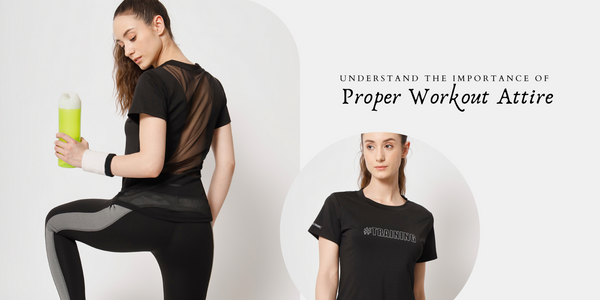
When it comes to exercise, the right clothing can significantly impact your performance, comfort, and overall experience. While it may be tempting to hit the gym or engage in physical activity without sporting proper workout attire, doing so can have negative consequences. In this blog, we will explore the importance of wearing sport clothes during exercise and highlight the potential risks and drawbacks of exercising without the right attire.
Enhanced Performance and Mobility:
Choosing the appropriate sport clothes for exercise is not just about fashion; it directly affects your performance. Regular clothes, such as jeans or cotton t-shirts, are not designed to accommodate the physical demands of workouts. They can restrict movement, impede flexibility, and hinder your ability to perform exercises effectively.
Sport clothes, on the other hand, are specifically engineered to enhance performance and mobility. They are typically made from breathable, moisture-wicking materials that keep you dry and comfortable during intense workouts. The right sport clothes provide freedom of movement, allowing you to perform exercises with ease, whether it's running, weightlifting, yoga, or any other physical activity.
Temperature Regulation and Safety:
Exercising without appropriate sport clothes can also impact your body's ability to regulate temperature effectively. Regular clothes tend to trap heat and moisture, leading to discomfort and potentially increasing the risk of heat-related illnesses such as heat exhaustion or heatstroke.
Sport clothes are designed to facilitate ventilation and regulate body temperature. They are often made of fabrics that wick away sweat and allow air to circulate, keeping you cool and reducing the risk of overheating. This is particularly important when exercising outdoors or in hot and humid environments.
Additionally, sport clothes often feature reflective elements or bright colors to enhance visibility during low-light conditions, ensuring your safety when exercising outdoors. They may also include features such as compression technology or padding in specific areas to provide support and protection, reducing the risk of injuries.
Preventing Discomfort and Chafing:
Exercising in regular clothes can lead to discomfort and chafing, particularly in areas prone to friction during physical activity. Cotton, a common fabric used in everyday clothing, absorbs moisture and retains it, resulting in dampness and increased friction against the skin.
Sport clothes, on the other hand, are designed to minimize friction and discomfort. They are typically constructed with flat seams and smooth fabrics to reduce chafing and irritation. Additionally, they often have a snug fit to minimize excess fabric that could cause rubbing or bunching.
Furthermore, specialized sport undergarments, such as sports bras and moisture-wicking underwear, offer added support and comfort. These undergarments provide crucial protection and prevent discomfort caused by excessive breast movement or friction in sensitive areas.
Psychological Boost and Mindset:
The right sport clothes can also provide a psychological boost and contribute to a positive mindset during exercise. When you dress the part, you feel more motivated, confident, and ready to tackle your workout. Sport clothes can help you mentally transition into exercise mode, signaling to your brain that it's time to focus and give your best effort.
Exercising without proper sport clothes can have negative impacts on your performance, comfort, and overall exercise experience. The right attire enhances performance and mobility, regulates body temperature, prevents discomfort and chafing, and contributes to a positive mindset. Investing in suitable sport clothes is an essential part of optimizing your workouts, reducing the risk of injuries, and ensuring you can fully enjoy and benefit from physical activity. So, next time you hit the gym or engage in exercise, remember the significance of donning the appropriate sport clothes for a successful and enjoyable workout.










